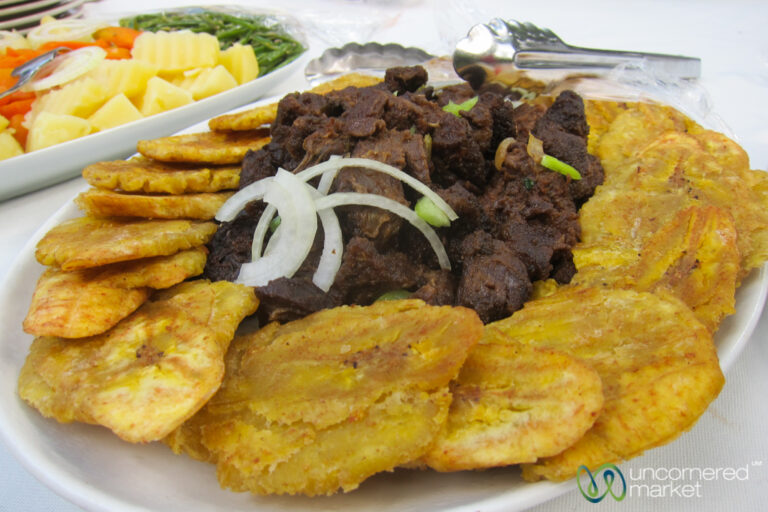Haitian cuisine in a nutshell
Haitian cuisine is a blend of African, French, and indigenous flavors and cooking techniques. It is known for its bold and spicy flavors, along with its use of fresh, locally-sourced ingredients. Haitian cuisine is also heavily influenced by the country’s history and culture, with many dishes being tied to important events and celebrations.
Griot: The signature dish of Haiti
Griot is considered to be the signature dish of Haiti. It consists of marinated pork that is fried until crispy and served with pikliz, a spicy condiment made with pickled vegetables. The pork is marinated overnight with a mixture of sour oranges, garlic, and other spices, which gives it its unique flavor. Griot is often served with rice and beans, fried plantains, and avocado salad, making for a delicious and hearty meal.
Soup Joumou: A special dish for Independence Day
Soup Joumou is a special dish that is traditionally served on Haitian Independence Day, which is celebrated on January 1st. It is a hearty soup made with pumpkin, beef, and vegetables, and is known for its rich and complex flavor. Soup Joumou is often served with bread or crackers and is a staple of Haitian cuisine.
Tassot: A spicy and crispy Haitian delicacy
Tassot is a spicy and crispy Haitian delicacy that is made with fried beef or goat meat. The meat is marinated in a mixture of sour orange juice, garlic, and other spices before being fried until crispy. Tassot is often served with pikliz or fried plantains and is a favorite among Haitians for its bold and flavorful taste.
Akra: A popular fritter made with malanga (taro) root
Akra is a popular fritter in Haitian cuisine that is made with malanga (taro) root. The root is grated and mixed with spices, onions, and other ingredients before being fried until crispy. Akra is often served as an appetizer or snack and is a crispy and flavorful treat that is beloved by many Haitians.
Pikliz: A tangy and spicy Haitian condiment
Pikliz is a tangy and spicy condiment that is a staple in Haitian cuisine. It is made with pickled vegetables, including cabbage, carrots, onions, and peppers, and is flavored with vinegar, garlic, and Scotch bonnet peppers. Pikliz is often served with griot, tassot, and other Haitian dishes, and adds a bold and flavorful kick to any meal.

